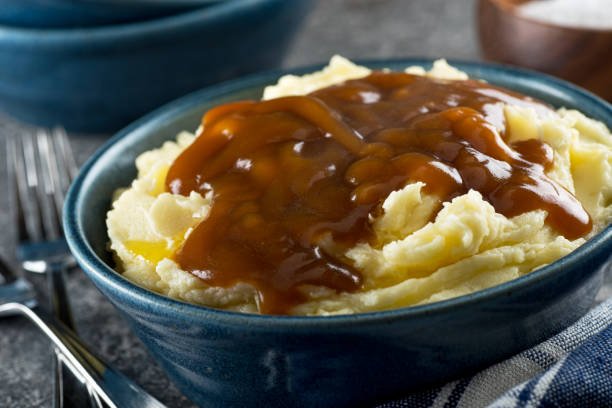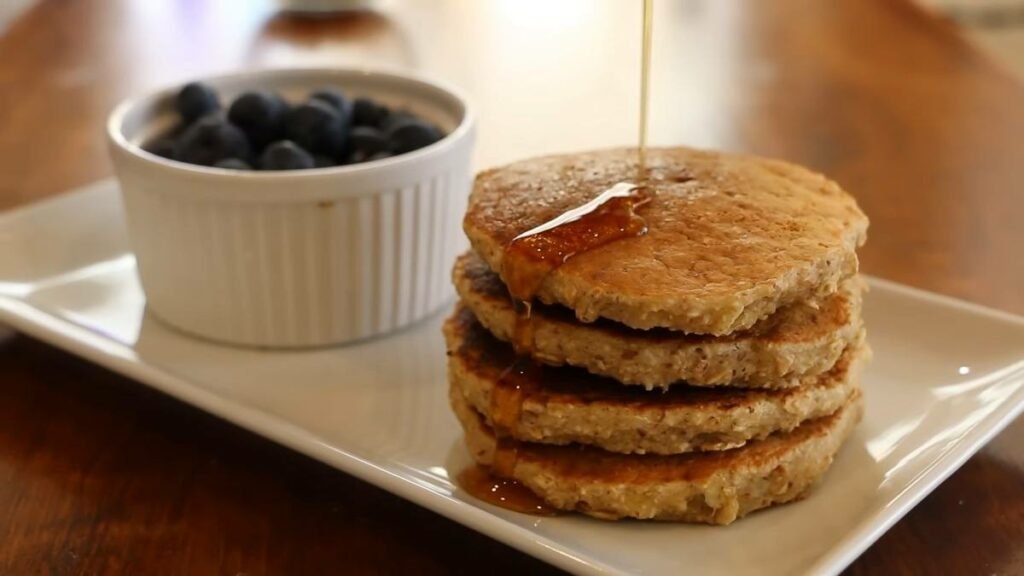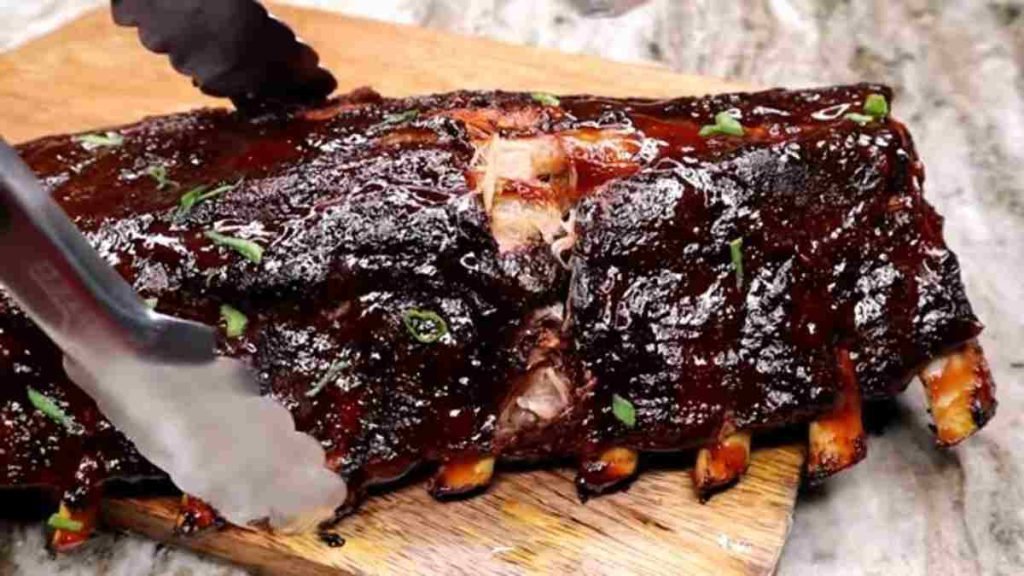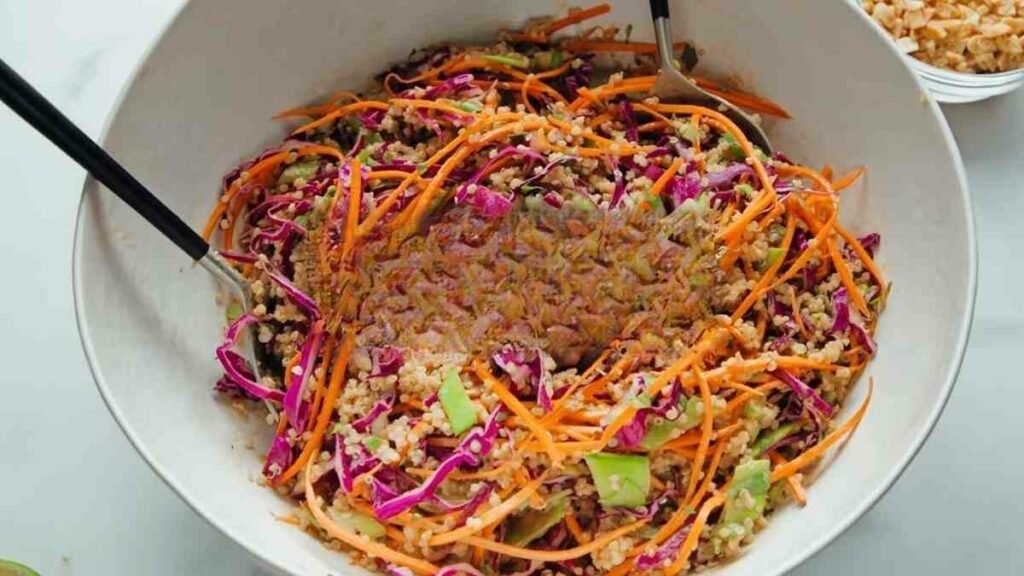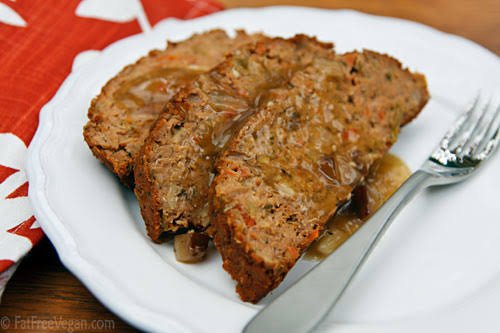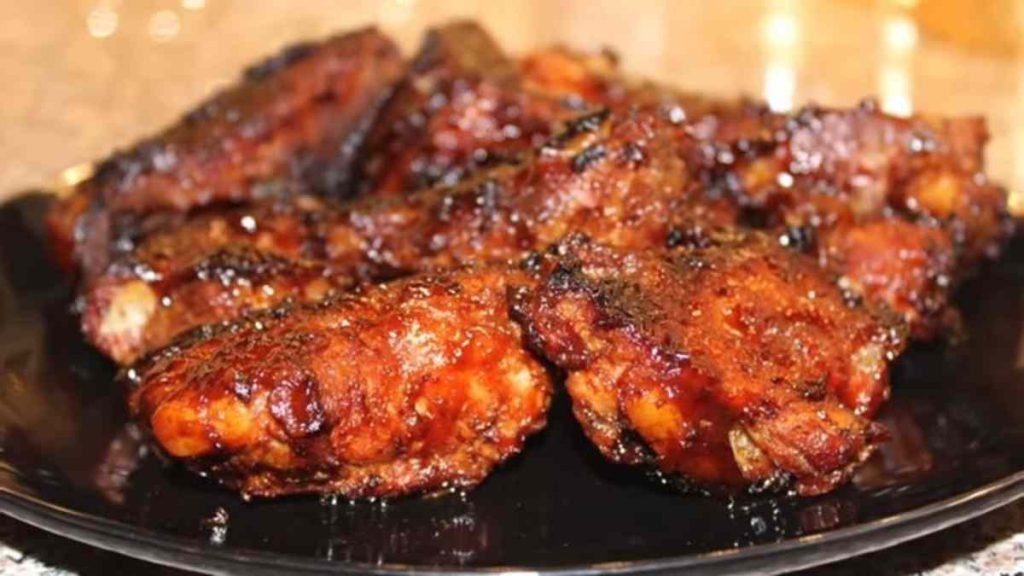Are you tired of baking cakes that turn out dry and crumbly? Do you dream of creating a moist and luscious dessert that leaves everyone craving for more? If so, you’re in the right place.
Achieving the perfect level of moisture in a cake is an art. It involves a delicate balance of ingredients and techniques that elevate your creation from ordinary to extraordinary. Imagine sinking your fork into a slice of cake that’s not only visually stunning but also irresistibly moist.
Is there any secret to that?
The secret to making a cake extra moist lies in understanding the nuances of ingredients, precise measurements, and a touch of culinary finesse. And getting them right means, you can confidently deliver cakes that keep families and others, not only impressed but craved for more.
15 Ways on How Can You Make a Cake More Moist
If you’ve ever faced the disappointment of a dry and lacklustre dessert, the tips here are all you need.
1. Embrace Buttermilk
Putting buttermilk in my cake recipes has been a game-changer, bringing a twist to both flavour and texture. The subtle tanginess that buttermilk imparts not only complements the sweetness of the cake but also contributes significantly to its overall tenderness.
I’ve come to appreciate the chemistry behind it – the acid in buttermilk reacting with baking soda creates a dance of carbonation that lifts the cake, resulting in a wonderfully light and airy texture that remains consistently moist.
What I love most about buttermilk is its versatility. Whether I’m baking a classic vanilla cake or indulging in the richness of a chocolate masterpiece, buttermilk seems to effortlessly adapt, imparting a unique depth of flavour to each creation.
For days I couldn’t find buttermilk, I’ve found success with simple substitutes – a tablespoon of vinegar or lemon juice in regular milk still manages to capture that distinctive buttermilk magic.
2. Try Adding Sour Cream
I love adding sour cream to my cake batter; it’s my go-to secret for achieving unparalleled moisture and richness. The creamy texture of sour cream not only ensures a velvety crumb but also imparts a delightful tang that elevates the overall flavour profile.
Whether it’s a classic vanilla or a decadent chocolate cake, a dollop of sour cream creates a moist masterpiece that leaves everyone asking for seconds. It’s my fail-proof ingredient for turning any cake into a moist and indulgent treat.
3. Choose the Right Oil
When it comes to choosing the right oil for my cakes, I opt for a neutral oil like vegetable or canola. These oils add moisture without overpowering the delicate flavours of the cake. The beauty lies in their subtle nature, allowing the other ingredients to shine while ensuring a moist and tender crumb.
It’s a simple yet effective choice that consistently results in cakes that are not only delicious but also irresistibly moist. The key is finding that perfect balance where the oil complements, rather than dominates, the overall taste and texture of my delectable creations.
4. Include Greek Yogurt
Whether crafting classic vanilla or fruit-infused creations, Greek yoghurt elevates moistness, ensuring every bite is indulgent.
A non-negotiable in recipes, it guarantees cakes boast a sumptuous, tender crumb. Farewell to dryness – with Greek yoghurt, cakes reach the pinnacle of moist perfection.
5. Experiment with Applesauce
This natural sweetener not only imparts a subtle sweetness but also guarantees a lush and moist texture. Whether it’s a classic vanilla or a spiced apple cake, incorporating applesauce elevates the overall quality, making each bite a delectable experience.
It’s another go-to secret for achieving unparalleled moistness without compromising on flavour for my bakers out there.
6. Try Mashed Bananas
The magic lies in the bananas’ ability to add both sweetness and moisture simultaneously, making them a versatile and wholesome addition to various cake recipes.
Whether crafting a classic banana bread or mixing it with other flavours, the inclusion of mashed bananas ensures a soft crumb and a moist, succulent outcome. This technique is not only a nod to wholesome baking but also a secret weapon for achieving a consistently delightful texture in cakes.
7. Opt for Real Butter
Real butter not only lends a rich and indulgent flavour but also brings luxurious moisture that margarine or oil substitutes often lack.
Its natural fat content contributes to a tender crumb, creating a melt-in-your-mouth texture that defines a perfect cake. When opting for real butter, ensure it’s at room temperature, allowing for easy incorporation into the batter.
8. Add a Pudding Mix
Adding a packet of instant pudding, whether it’s vanilla, chocolate, or another complementary flavour, introduces a velvety richness that transforms your cake into a luscious delight.
The pudding mix not only contributes a smooth texture but also intensifies the overall moistness, ensuring each bite is a delectable experience.
9. Use Brown Sugar
Unlike white sugar, brown sugar contains molasses, which adds a rich and caramel-like taste to your baked goods. The molasses content in brown sugar also contributes to the cake’s moistness, keeping it soft and tender. When using brown sugar, its natural moisture and the hint of toffee-like goodness it imparts make your cake a delectable treat.
Simply swap out some or all of the white sugar in your recipe with brown sugar for an easy way to elevate the flavour and ensure a moist, irresistible cake. It’s a small change with a big impact on the overall deliciousness of your homemade desserts.
10. Incorporate Coconut Milk
This simple addition brings a delightful tropical twist to your baked goods. Replace a portion of the regular milk or liquid in your recipe with coconut milk. Its natural richness and subtle sweetness infuse your cake with a unique flavour and keep it incredibly moist.
Coconut milk adds a touch of indulgence without being overpowering. Be sure to mix it well into the batter for an even distribution of flavour and moisture.
11. Don’t Overmix
When making a cake, it’s crucial not to overmix the batter. Overmixing means stirring or beating the ingredients for too long. Imagine you’re gently folding a fluffy cloud – that’s the kind of care your batter needs. Overmixing can make the cake tough and less fluffy because it activates too much gluten, which is like a stretchy net in the batter.
This net is good, but too much of it makes the cake less tender. So, once you’ve combined the wet and dry ingredients, mix only until they’re just blended. Small lumps are okay! It’s a simple step, but it ensures your cake stays light, airy, and delicious.
12. Sift Dry Ingredients
Sifting dry ingredients is like giving your cake flour a breath of fresh air. When you sift, you’re using a tool, often a fine mesh sieve, to break up clumps and make everything fluffy. It’s like a gentle massage for your flour, cocoa powder, and baking soda, ensuring they mix evenly.
This matters because evenly mixed dry ingredients mean a smoother batter. No one likes biting into a pocket of dry flour.
Sifting also adds air, which lightens up the mixture, making your cake softer and more tender. So, take a minute to sift and you will love the uniform texture cake.
13. Add Extra Eggs
Eggs act as a binding agent and contribute to the cake’s structure while providing richness and tenderness. When I add extra eggs, I notice a velvety texture and a moist crumb in the finished cake. The proteins in eggs help retain moisture during baking, resulting in a delightful, soft consistency.
Just crack a couple more eggs into your mix, beat them in thoroughly, and revel in the difference it makes. It’s a simple yet effective trick for achieving a cake that’s not only delicious but also wonderfully moist.
14. Use Cake Flour
Cake flour is a finely milled, low-protein flour that’s perfect for creating light and tender cakes. Unlike all-purpose flour, cake flour has a lower protein content, which means it produces less gluten when mixed. This low gluten formation results in a softer, more delicate crumb in your cakes.
When you use cake flour, your cakes are less likely to turn out dense or heavy. It’s ideal for recipes where you want a fine and fluffy texture, such as in layer cakes, cupcakes, and certain pastries
15. Hydrate with Coffee
Using coffee in your cake batter not only enhances the rich, chocolatey flavour but also keeps the cake wonderfully moist. The natural acidity in coffee adds a depth of taste while ensuring a tender and moist texture.
Simply brew a strong cup of coffee and let it cool before gently incorporating it into your batter. The result? A delectable and moist cake that will leave your taste buds delighted.
Common Errors That Lead to Dry Cakes and How To Deal With Them
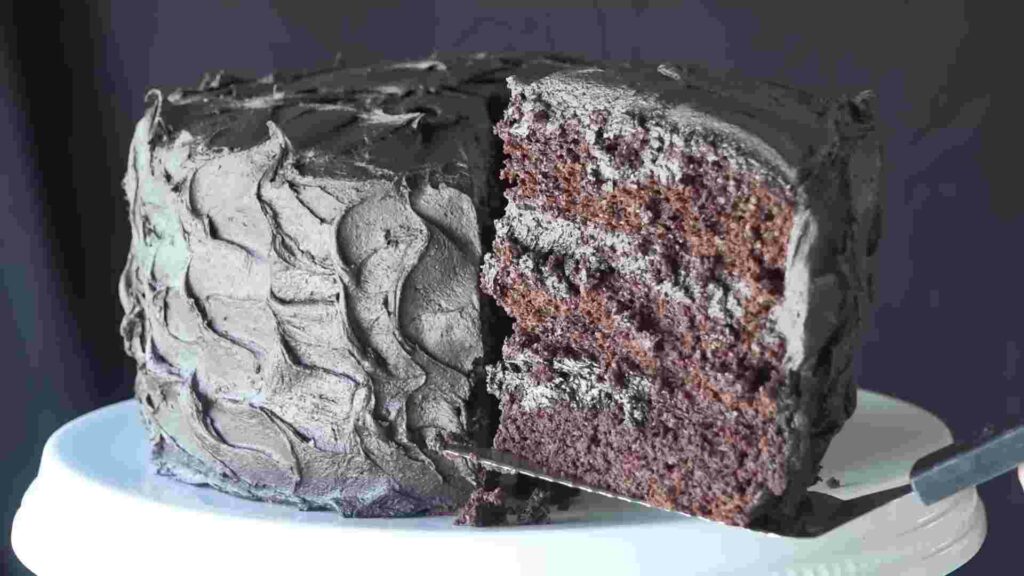
Few things are more disheartening for a baker than putting time and effort into creating what was intended to be a moist and indulgent cake, only to end up with a dry disappointment.
1. Overbaking
Overbaking is a common mistake that can turn a perfectly moist cake into a Sahara of crumbs. The extra time in the oven leads to excessive moisture evaporation.
How to Deal:
- Invest in an oven thermometer to ensure accurate temperature.
- Set a timer and check for doneness a few minutes before the recommended baking time.
- Consider using a toothpick or cake tester to check for moist crumbs rather than a clean pick.
2. Incorrect Measurement
Incorrectly measuring ingredients, especially flour, can throw off the delicate balance of a cake recipe, resulting in a dry texture.
How to Deal:
- Use proper measuring techniques, levelling off dry ingredients with a straight edge.
- Consider investing in a kitchen scale for precise measurements.
- Double-check ingredient quantities before adding them to the batter.
3. Overmixing Blues
Overzealous mixing can lead to overdeveloped gluten, resulting in a tough and dry cake texture.
How to Deal:
- Mix until just combined, especially when adding dry ingredients.
- Consider using a spatula for folding in delicate ingredients to avoid overmixing.
4. Lack of Moistening Ingredients
Neglecting to include moisture-rich ingredients like yoghurt, buttermilk, or fruit can leave your cake high and dry.
How to Deal:
- Experiment with moistening ingredients like Greek yoghurt, sour cream, or applesauce.
- Adjust the quantities of these ingredients based on the desired level of moisture.
5. The Perils of Too Much Flour
Using too much flour can absorb excess moisture, resulting in a dry and dense cake.
How to Deal:
- Measure flour carefully, and consider using the spoon-and-level method.
- Experiment with alternative flours like cake flour, which has a lower protein content.
6. Not Enough Fat Love
Insufficient fat content, whether it’s butter or oil, can lead to a lack of moisture in the final product.
How to Deal:
- Ensure you’re using the recommended amount of fats in your recipe.
- Experiment with different types of fats to find the right balance for your desired texture.
7. Inadequate Sympathy for Room Temperature Ingredients
Cold ingredients, especially eggs and butter, can disrupt the emulsion and result in a less cohesive batter.
How to Deal:
- Allow ingredients to come to room temperature before incorporating them into the batter.
- Plan and set ingredients out at the beginning of your baking session.
8. Skimping on Syrup Soaking
Forgetting to add a syrup soak post-baking can miss an opportunity to infuse additional moisture.
How to Deal:
- Experiment with flavoured syrups, simple sugar syrups, or even fruit juices to brush over the cake after baking.
- Ensure the cake has cooled slightly before applying the syrup.
9. Inadequate Storage Habits
Improper storage can lead to moisture loss over time, turning your once-moist cake into a dry crumbly mess.
How to Deal:
- Store cakes in airtight containers or wrap them tightly in plastic wrap.
- Consider refrigerating or freezing cakes for prolonged freshness.
10. Skimming Over the Recipe
Failing to thoroughly read and understand the recipe can lead to oversights in crucial steps that impact moisture.
How to Deal:
- Take the time to read the recipe in its entirety before starting.
- Familiarize yourself with each step and ensure you have all the necessary ingredients.
And the video below can give you more insights.





